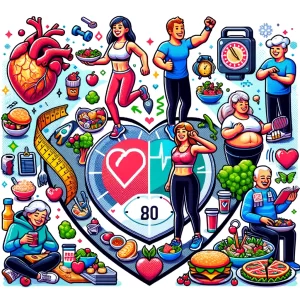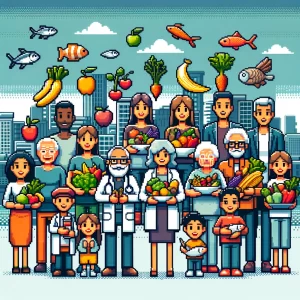
The Links Between Food Security and Nutrition Security: A Deep Dive
In the bustling aisles of your local supermarket, the choices you make can spin a complex web of health implications that extend far beyond the checkout line. Recent research spearheaded by the U.S. Department of Agriculture’s Economic Research Service (USDA ERS) casts a new light on this issue, exploring the nuanced relationship between food security and nutrition security—terms that, while related, represent distinct facets of health and wellness.
The Essence of Food Security vs. Nutrition Security
Food security is a concept most of us are familiar with: having consistent access to enough food for a healthy, active life. Nutrition security, however, takes this a step further by focusing on the types of foods we consume, aiming for a diet that promotes well-being, prevents disease, and manages health conditions effectively.
Understanding the Gap
Despite America’s abundant food supply, our eating habits leave much to be desired. The USDA’s Healthy Eating Index reveals that the average American diet scores a mere 59 out of 100. What’s more alarming? Over 80% of the population does not meet the recommended intake of fruits, vegetables, and dairy. This diet disparity contributes significantly to the prevalence of diet-related diseases such as obesity, diabetes, and heart disease—conditions that disproportionately affect low-income and food-insecure households.
Bridging the Divide
The USDA ERS’s framework recognizes two critical aspects of nutrition security: access and quality. Access refers to the availability of sufficient food resources that are both affordable and consistent, ensuring that no individual or household goes hungry. However, access alone isn’t enough. The quality of the food accessed plays an equally vital role, as it must meet the nutritional needs of individuals, thereby contributing to their overall health and well-being.
The Role of Healthy Diets and Nutritional Status
The framework delves deeper into the components of nutrition security by outlining its primary constructs: healthy diets and nutritional status. A healthy diet is defined not only by its adequacy to prevent nutrient deficiencies but also by its balance and diversity, which are crucial for preventing chronic diseases and supporting overall health. Nutritional status, on the other hand, evaluates whether individuals are actually achieving the necessary nutrient intake for optimal health outcomes.
Addressing the Subconstructs
The USDA ERS framework further breaks down these constructs into actionable subconstructs:
- Healthy Diets: This includes ensuring that dietary intake is rich in diversity, balanced in macronutrients, and moderate in consumption of fats, sugars, and salts. It also emphasizes the importance of nutrient density, which ensures that the diet provides sufficient vitamins and minerals relative to its energy content.
- Nutritional Status: This construct is assessed through physical health indicators such as body mass index (BMI), blood pressure, and blood nutrient levels. It reflects the physical manifestation of dietary intake and its adequacy in meeting individual health needs.
Practical Applications and Monitoring
With these constructs and subconstructs, the framework not only provides a tool for understanding nutrition security but also serves as a guide for policy makers and health professionals. By using this framework, they can develop targeted interventions that address specific areas of need within communities, ensuring that both access and dietary quality are improved. Moreover, it facilitates the monitoring of progress in achieving nutrition security, offering a clear set of metrics to gauge the effectiveness of health policies and programs.
Why This Matters
This research is more than academic—it’s a call to action. It points to the urgent need for comprehensive strategies that address not only the availability of food but also its nutritional value. By integrating food security and nutrition security into a cohesive policy and research agenda, we can better tackle the root causes of health disparities and improve outcomes across the board.
Engage and Learn
I encourage you to delve deeper into this topic and reflect on your dietary choices and their broader social implications. How does your own food security compare with nutrition security? What steps can you take to bridge the gap in your community?
Lead the Way in Public Health – Get Your Weekly Insight!
Ready to lead the charge in health advocacy and research? ‘This Week in Public Health’ delivers essential weekly updates, keeping you informed and ahead in the dynamic field of public health. With insights on the latest breakthroughs and initiatives, our newsletter is your gateway to being a proactive leader. Subscribe for free and start shaping the future of public health today!
About the Author
Jon Scaccia, with a Ph.D. in clinical-community psychology and a research fellowship at the US Department of Health and Human Services with expertise in public health systems and quality programs. He specializes in implementing innovative, data-informed strategies to enhance community health and development. Jon helped develop the R=MC² readiness model, which aids organizations in effectively navigating change.



